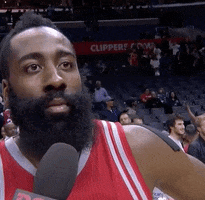the MOUSE
Bones don't lie, Mosley. See you in Animal Park
- Joined
- Sep 27, 2023
- Posts
- 1,478
- Reputation
- 3,287
In the past, we had a few dopamine hits per day. Today, we get hundreds.
This amount of dopamine changes the relationship we have with pain and pleasure.
Pain and pleasure inside the brain are two sides of the same coin and can be understood as a balance constantly seeking equilibrium.
When the balance tips on the side of pleasure (eg: after eating ice cream), the brain automatically compensates by “creating pain”. On the other hand, when the balance tips to the side of pain (exercise, cold and heat exposure, fasting, etc), the brain compensates by making you feel pleasure.
To the brain, pain is pleasure and pleasure is pain.
Drugs are characterized by the high amount of pleasure (aka dopamine) it triggers inside the brain.
When abused, the brain builds a tolerance to the drug to the point that the “balance” is stuck on the side of pain: this is anhedonia.
The only way to reset the tolerance to the product is to abstain from consuming the drug entirely. Addicts have to erect barriers between them and the drug (Eg: calling casinos to get yourself banned from them).
Fortunately, addicts can reverse the system and become happy again by seeking to do healthy and painful things that will give them pleasure (Eg: cold showers).
One of the most important things on the path toward a happier life is honesty. Honesty prevents denial of addiction and enables connection with the self and with other people. It enables the true self to get out and tackle the addiction in a pro-active and honest way.
It also helps the addict to recognize where the addiction comes from and what the addict is running away from.
Eventually, it helps you face what you fear.
And fix your problem.
We’ve transformed a world of scarcity into a world of abundance that delivers dopamine 24/7.
You should know that:
The first cause for the development of an addiction is the availability of the addictive product. The less of it there is, the smaller the risk of getting addicted.
While alcohol thrived in the black market during the prohibition in the US, there were much fewer alcoholics than now.
When it became legal again, alcoholism increased.
In our society, technology made everything
Eg:
Seventy percent of global world deaths are attributable to smoking, physical inactivity, and diet.
The poor and undereducated, especially those living in rich nations, are most susceptible to the consumption of addictive products.
They have easy access to high-reward drugs whose consumption is indirectly encouraged by the lack of access to meaningful work, safe housing, quality education, and affordable health care.
Whatever the product consumed, addicted people’s stories are all similar: they just want to feel good.
The second factor that creates addiction is the obsession with maximizing pleasure and decreasing pain.
We mostly focus on getting pleasure while trying hard to avoid all of the pain that goes with it.
Today, parents raise kids without any willingness to put them through difficult situations that fortify them. As a result, kids become lazy and afraid every time they need to go through a tiny bit of pain.
This makes them soft.
In the past, doctors believed that pain healed patients faster (they were hence unwilling to prescribe painkillers).
While this has never been proven, the opposite has: painkillers make for a slower recovery…
Today, it’s the opposite of the past. Pain is bad and must be alleviated directly. As a result, the use of anti-depressants has exploded in recent decades.
Eg: most people cannot eat or walk without listening to or watching some sort of entertainment.
The “pain” of boredom is too strong.
Unfortunately, avoiding being miserable is making us miserable.
Both psychological and physical pain have been rising since we have been measuring them.
By better understanding the mechanisms that govern pain and pleasure, we can gain new insight into why and how too much pleasure leads to pain.
The brain is made out of neurons that communicate with each other by sending electric signals and neurotransmitters along cables called synapses.
 An extremely basic drawing of a neuron communicating with another.
An extremely basic drawing of a neuron communicating with another.
Dopamine is one of these neurotransmitters. It’s the most important one when it comes to rewards and motivation.
In fact, it plays a bigger role in the action that leads to the reward (wanting. Eg: getting up to get an ice cream) rather than the reward itself (liking. Eg: the ice cream).
Labs mice modified not to make dopamine did not seek food and starved to death, even if the food was located right next to them…
The more dopamine the brain releases upon doing something, the more that thing becomes addictive.
Here’s how much increase in dopamine the following activities lead to for rats.
Scientists discovered that pain and pleasure work like a balance.
 The pain/pleasure balance.
The pain/pleasure balance.
The problem is that this balance wants to constantly remain in equilibrium.
As soon as it tips on the side of pleasure…
 The pain/pleasure balance, on the side of pleasure
The pain/pleasure balance, on the side of pleasure
It automatically comes back into equilibrium by manufacturing pain to do so (this principle is called homeostasis).
 The pain/pleasure balance reequilibrating.
The pain/pleasure balance reequilibrating.
Then it further tips towards pain (of course).
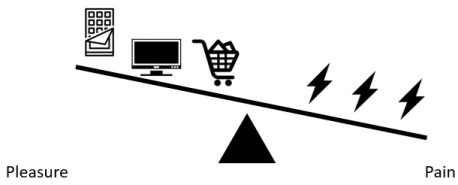 The pain/pleasure balance, on the side of pain.
The pain/pleasure balance, on the side of pain.
This effect is called the opponent-process theory.
That cost is an “after-reaction” that is opposite to the stimulus. “What goes up eventually comes down”.
The natural solution to avoid the pain is to repeat what initially gave pleasure.
The problem is that the brain builds tolerance to what gives it pleasure. As a result, the amount of pleasure we experience weakens, but the amount of pain increases.
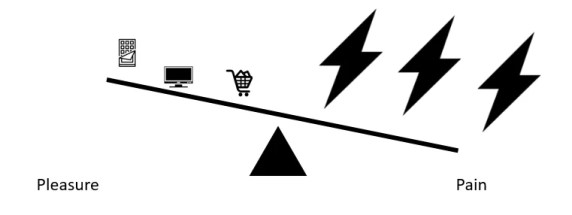 The amount of pleasure we experience then gets weaker and weaker, and the amount of pain bigger and bigger.
The amount of pleasure we experience then gets weaker and weaker, and the amount of pain bigger and bigger.
Therefore, you need more and more of the pleasurable stimulus to achieve equal pleasure.
If you go too far in your consumption, the balance gets permanently tipped on the side of pain.
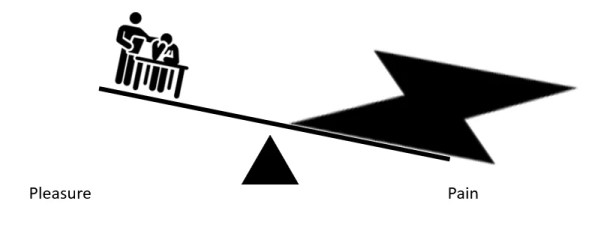 The balance gets permanently tipped on the side of pain.
The balance gets permanently tipped on the side of pain.
Prolonged consumption of high-dopamine substances eventually leads to a dopamine deficit state.
-> nothing feels good anymore.
When addicted people reach this point, they stop feeling anything when they take their drug, which makes them feel miserable. And they feel equally miserable if they don’t take it.
Side note: the balance is a metaphor. We can experience both pleasure and pain at the same time (eg: eating spicy food). Furthermore, not everyone starts off with the same balance. For some, it’s inherently tipped to the side of pain.
Symptoms of withdrawal from any addictive substance are anxiety, irritability, insomnia, and dysphoria.
People who relapse into their addiction have their balance tilted to the side of pain. They suffer, so they feel the need to tip the balance the other way.
This is called dysphoria-driven relapse (avoiding pain rather than seeking pleasure).
If you wait long enough, the brain eventually resets and the balance comes back into equilibrium.
The pleasure-pain balance (PPB) is not only triggered by the drug itself but also by cues that existed in the environment where the drug was consumed (see James Clear’s Atomic Habits).
This is Pavlov’s principle: the brain triggers dopamine when it receives the cue. Right after receiving the cue, the brain decreases the level of dopamine which compels us to seek the reward (this is how craving works).
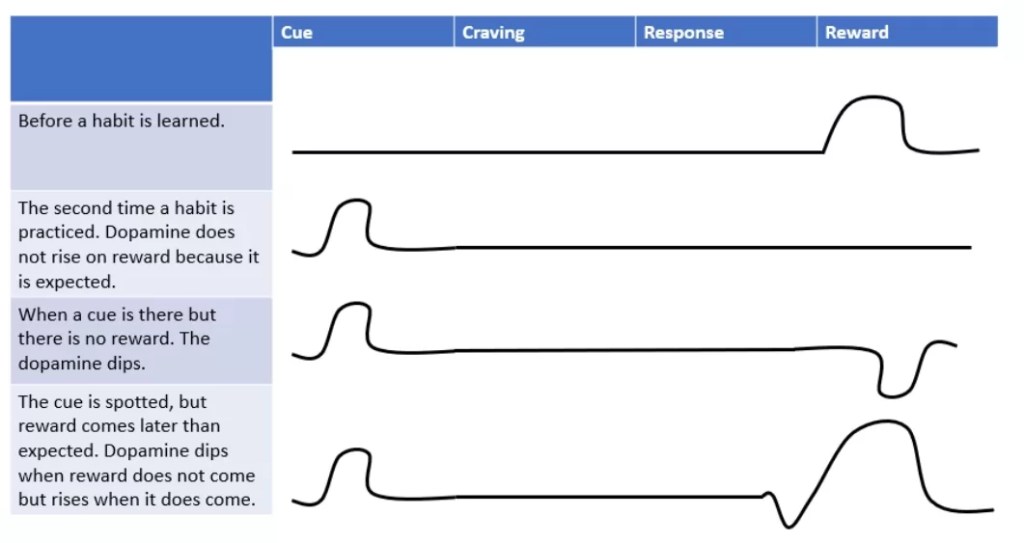 Dopamine in the brain. Taken from Atomic Habits.
Dopamine in the brain. Taken from Atomic Habits.
If we get the reward, dopamine increases. If we don’t, dopamine plunges even further (it’s the letdown to unmet expectations).
In gambling, players experience as much dopamine when they both lose and win. The more they lose, the stronger the urge to play, the better the reward when they win.
The same principle likely applies to social media, where both negative and positive attention is pleasurable.
The problem with some addictions (like cocaine, alcohol, opioids, or even cannabis) is that it seems you never really get rid of them.
Eg: When rats were injected with cocaine after running, they went from running a nice chilled jog to running faster every day, until sprinting.
After one year of sobriety (a long time for a rat), the scientists gave them cocaine again. They directly went back to sprinting.
The more addicted to a substance you are in general, the less pleasure you will feel in other situations.
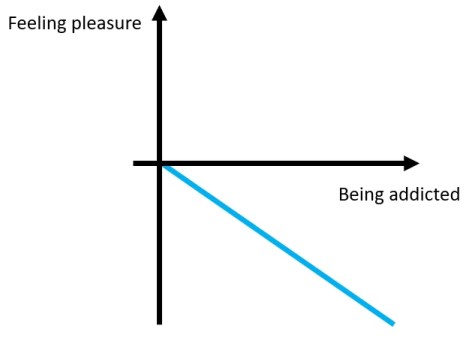 The more addicted to a substance you are in general, the less pleasure you will feel in other situations.
The more addicted to a substance you are in general, the less pleasure you will feel in other situations.
Why is that?
Because our reward/pain neural path was adapted to a world of scarcity. It was so well adapted that we have transformed this world into a world of abundance, with the problems that we know today.
People that need to get off their drugs can use the framework DOPAMINE to do so.
Now, what do you do when you get addicted to something you must use like a smartphone, or food?
Self-binding is the action of putting up barriers to stop yourself from taking your drugs. It’s not about self-discipline. It’s about recognizing that self-discipline has some limits.
There are three types:
Get rid of your TV, block porn sites, or move to another place.
Some people take naltrexone, a medicine that blocks the opioid receptors in the brain. Another is disulfiram, which makes people sick when they drink alcohol, thereby changing the association in the mind.
It’s important to treat the underlying cause of the addiction. People with gastric banding often become alcoholics since they can no longer cope with food.
These entail consuming the drug only at certain times: eg: the weekend; no more till Christmas; only until my birthday, etc.
Studies suggest this works better than if you have unlimited access at every hour.
Something funny: addicted people are less willing to wait for anything in general and less likely to delay gratification than non-addicts. This is because instantaneous rewards trigger more dopamine than delayed ones – and they’re hooked on dopamine.
-> Google gives instant results, Amazon gives instant delivery, and Netflix provides instant entertainment.
Kids growing up in poverty are more likely to choose instantaneous gratification than kids growing up in a wealthy environment, hence priming the former for addictions.
Furthermore, we work less today than before, which means we are more bored, which means we are more prone to dopamine activities.
And while working less (or getting bored) increases your chances to become addicted, being addicted compels you to work less.
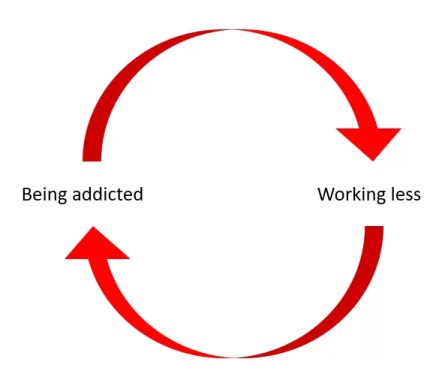 The vicious circle of addiction and laziness.
The vicious circle of addiction and laziness.
It’s about cutting yourself off from the cues that trigger the addiction.
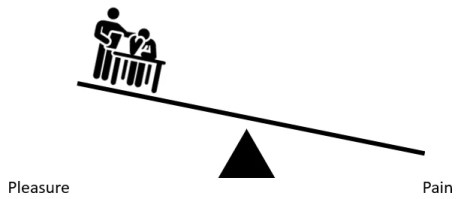 Sometimes, the balance is naturally broken.
Sometimes, the balance is naturally broken.
There are two problems with pain-relieving psychiatric drugs.
Most people on psychiatric drugs have been relieved in the short-term, but were incapable of experiencing powerful emotions in the long term.
By treating people for pain, we’re making them tolerant of intolerable situations.
Furthermore, without pain for anything…we lack the motivation to do things.
The author tells the story of one of her patients who solved his cocaine craving by taking cold showers.
He noticed that not only this decreased his desire for the drug, but it also made him happy – like taking the drug.
A team of scientists showed that cold water exposure increased dopamine concentrations by 250%, and norepinephrine increased by 530%. These last up to one hour after exposure to the stimulus.
-> doing painful things eventually makes you happy!
By pressing on the pain side of the balance first, the brain compensates by triggering pleasure.
The pleasure we feel is just the response to pain.
Something Socrates had already found out thousands of years ago!
Hormesis is the science that studies the effect of introducing small amounts of pain like cold, heat, food restriction, or exercise.
The idea is that a small painful stimulus will make living things stronger (antifragility) but too much of it could of course break them.
Physical exercise, for example, is immediately toxic to cells. Yet all in all, it strongly benefits your body and helps you live longer.
It also increases neurotransmitters making you in a good mood, such as:
Exercise also contributes to the birth of new neurons and reduces the likelihood of getting addicted to drugs.
Dopamine has been shown to be associated with the realization of a desire. Of course when dopamine is accessible by just touching a button on a phone…then we stop to be compelled to go get what we want since it automatically arrives (Eg: Ubereat).
On the other hand, pursuing pain instead of pleasure is hard, countercultural, and counter-intuitive too.
Pain has been used to treat pain for more than 2000 years. Pain has been used to treat pain for more than 2000 years.
These therapies declined in the 20th century with the discovery of drug therapy.
Yet the methods of the past were not necessarily wrong. A team of scientists found out that the subjective experience of pain caused by an initial painful stimulus decreased with the application of a second painful stimulus.
This may also be why and how acupuncture works: it triggers pain in certain parts of the body which the body automatically takes care of.
Likewise, patients that have phobias learn to get rid of them by exposing themselves to the thing they’re scared of.
Related to this, Alex Honnold, the guy who climbed the El Capitan without ropes, has a higher fear tolerance than most people, likely due to repeated training.
Now, some people go completely the other way and get addicted to the pain itself.
The high they get after cold water or exercise is so good that they increase and increase the pain as the bigger the pain, the bigger the high.
This is the case for the running wheels of lab mice: they become drugs (a lab rat will voluntarily use a running wheel in the wild).
The running wheel is to a rodent what extreme sports are to people. Stress has even been shown to be associated with dopamine release, in some cases.
Skydivers in fact have a higher risk of anhedonia than other people, because the high is addictive.
-> too much pain can increase the risk to become addicted to the pain!
Children begin to lie as early as two years old.
We’re wired to lie.
Why? Because telling the truth hurts. And lie, because it is first pleasurable, can quickly become addictive.
Addicted people are also often pathological liars. They even lie about stuff that doesn’t make sense to lie about (breakfast menu).
Radical honesty is essential for the following reasons:
When Odysseus decided to listen to the sirens, tied to the mast, he did not only do it to hear them. He also knew that the sirens would die if anyone that heard them lived to tell about it.
-> telling what happened enables us to master it.
A team of scientists discovered that stimulating the prefrontal cortex with electricity made people more honest.
It may also be the other way around: telling the truth stimulates the prefrontal cortex -> telling the truth changes us.
Not only does it change us, but like pain, it’s also addictive when it enables the strengthening of relationships with people.
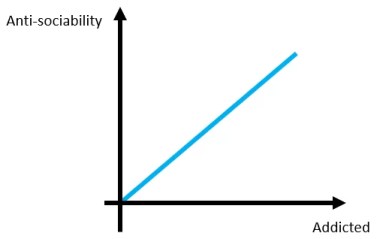 The more addicted you are, the less interested you are to be with other people.
The more addicted you are, the less interested you are to be with other people.
Some people may even get addicted to their addiction stories because they trigger reactions in the audience to which they get addicted. It’s called drunkalogues.
Telling the truth also helps you get better. People that tell their lives from a victim’s point of view are often unwell (and remain so). People telling their stories and taking responsibility usually get better.
The self-victimization societal trend is a problem.
Another consequence of lying is the false self. A false self is created when the real self is assaulted by unrealistic demands and expectations. Social media, for example, enabled us to create a false self by portraying a reality that just isn’t so.
The problem is that the creation of a false self makes us feel fake, detached, and unreal.
The only antidote is the real self.
Finally, truth-telling helps with having an abundance mindset.
Children that know of broken promises, or that were lied to and subsequently discovered it, grow up in a world where they don’t get honesty or the things they were told they could expect. They grow up in a dangerous world that cannot be trusted.
Why do we have a scarcity mindset in the Western world where there is an abundance of everything?
Because too much dopamine makes us crave things (more dopamine), hence conveying the idea that “there isn’t enough”.
One of the ways to find abundance everywhere is to work on a purpose bigger than ourselves and be connected to people.
And this requires honesty.
Shame is an emotion that makes us feel guilty about ourselves as people, while guilt makes us feel guilty about our actions.
Overconsumption can lead to shame, which itself can both encourage or repress the “shameful” behavior.
Indeed, there are two types of shame:
Truth (and discipline) is once again, extremely important.
What if instead of taking drugs to escape the painful aspects of life, we immersed ourselves in these painful aspects?
Stop running from whatever you’re escaping from. Turn away.
And face it.
This amount of dopamine changes the relationship we have with pain and pleasure.
Pain and pleasure inside the brain are two sides of the same coin and can be understood as a balance constantly seeking equilibrium.
When the balance tips on the side of pleasure (eg: after eating ice cream), the brain automatically compensates by “creating pain”. On the other hand, when the balance tips to the side of pain (exercise, cold and heat exposure, fasting, etc), the brain compensates by making you feel pleasure.
To the brain, pain is pleasure and pleasure is pain.
Drugs are characterized by the high amount of pleasure (aka dopamine) it triggers inside the brain.
When abused, the brain builds a tolerance to the drug to the point that the “balance” is stuck on the side of pain: this is anhedonia.
The only way to reset the tolerance to the product is to abstain from consuming the drug entirely. Addicts have to erect barriers between them and the drug (Eg: calling casinos to get yourself banned from them).
Fortunately, addicts can reverse the system and become happy again by seeking to do healthy and painful things that will give them pleasure (Eg: cold showers).
One of the most important things on the path toward a happier life is honesty. Honesty prevents denial of addiction and enables connection with the self and with other people. It enables the true self to get out and tackle the addiction in a pro-active and honest way.
It also helps the addict to recognize where the addiction comes from and what the addict is running away from.
Eventually, it helps you face what you fear.
And fix your problem.
The Problem
We’ve transformed a world of scarcity into a world of abundance that delivers dopamine 24/7.
You should know that:
- Dopamine is the “universal currency” to measure the addictive potential of an experience.
- The brain processes pleasure and pain in the same place.
- Pleasure and pain are the opposite sides of the same balance.
- When we want a good experience to continue, the balance tips to the side of pain.
Part I: The Pursuit of Pleasure
Chapter 1: Our Masturbation Machines
Addiction broadly defined is the continued and compulsive consumption of a substance or behavior (gambling, gaming, sex) despite its harm to self and/or others.
The first cause for the development of an addiction is the availability of the addictive product. The less of it there is, the smaller the risk of getting addicted.
While alcohol thrived in the black market during the prohibition in the US, there were much fewer alcoholics than now.
When it became legal again, alcoholism increased.
In our society, technology made everything
- More available.
- More addictive.
Eg:
- Morphine, heroin, and fentanyl
- Cigarettes
- Weed
- Food (fried, sweet, etc)
- Digital products: videos, porn, games, gambling, etc.
The act of consumption itself has become a drug.
Seventy percent of global world deaths are attributable to smoking, physical inactivity, and diet.
The poor and undereducated, especially those living in rich nations, are most susceptible to the consumption of addictive products.
They have easy access to high-reward drugs whose consumption is indirectly encouraged by the lack of access to meaningful work, safe housing, quality education, and affordable health care.
Whatever the product consumed, addicted people’s stories are all similar: they just want to feel good.
Chapter 2: Running from Pain
The second factor that creates addiction is the obsession with maximizing pleasure and decreasing pain.
Religious man was born to be saved; psychological man is born to be pleased.
We mostly focus on getting pleasure while trying hard to avoid all of the pain that goes with it.
Today, parents raise kids without any willingness to put them through difficult situations that fortify them. As a result, kids become lazy and afraid every time they need to go through a tiny bit of pain.
This makes them soft.
In the past, doctors believed that pain healed patients faster (they were hence unwilling to prescribe painkillers).
While this has never been proven, the opposite has: painkillers make for a slower recovery…
Today, it’s the opposite of the past. Pain is bad and must be alleviated directly. As a result, the use of anti-depressants has exploded in recent decades.
Beyond extreme examples of running from pain, we’ve lost the ability to tolerate even minor forms of discomfort. We’re constantly seeking to distract ourselves from the present moment, to be entertained.
Eg: most people cannot eat or walk without listening to or watching some sort of entertainment.
The “pain” of boredom is too strong.
Unfortunately, avoiding being miserable is making us miserable.
Both psychological and physical pain have been rising since we have been measuring them.
Chapter 3: The Pleasure-Pain Balance
By better understanding the mechanisms that govern pain and pleasure, we can gain new insight into why and how too much pleasure leads to pain.
The brain is made out of neurons that communicate with each other by sending electric signals and neurotransmitters along cables called synapses.

Dopamine is one of these neurotransmitters. It’s the most important one when it comes to rewards and motivation.
In fact, it plays a bigger role in the action that leads to the reward (wanting. Eg: getting up to get an ice cream) rather than the reward itself (liking. Eg: the ice cream).
Labs mice modified not to make dopamine did not seek food and starved to death, even if the food was located right next to them…
The more dopamine the brain releases upon doing something, the more that thing becomes addictive.
Here’s how much increase in dopamine the following activities lead to for rats.
| Activity | Increase |
| Chocolate | 55% |
| Sex | 100% |
| Nicotine | 150% |
| Cocaine | 225% |
| Amphetamine | 1000% (aka 10 orgasms) |
The Pain-Pleasure Balance
Scientists discovered that pain and pleasure work like a balance.

The problem is that this balance wants to constantly remain in equilibrium.
As soon as it tips on the side of pleasure…

It automatically comes back into equilibrium by manufacturing pain to do so (this principle is called homeostasis).

Then it further tips towards pain (of course).

This effect is called the opponent-process theory.
“Any prolonged or repeated departures from hedonic or affective neutrality . . . have a cost.”
That cost is an “after-reaction” that is opposite to the stimulus. “What goes up eventually comes down”.
The natural solution to avoid the pain is to repeat what initially gave pleasure.
The problem is that the brain builds tolerance to what gives it pleasure. As a result, the amount of pleasure we experience weakens, but the amount of pain increases.

Therefore, you need more and more of the pleasurable stimulus to achieve equal pleasure.
If you go too far in your consumption, the balance gets permanently tipped on the side of pain.

Prolonged consumption of high-dopamine substances eventually leads to a dopamine deficit state.
-> nothing feels good anymore.
The pursuit of pleasure for its own sake, leads to anhedonia, which is the inability to enjoy pleasure of any kind.
When addicted people reach this point, they stop feeling anything when they take their drug, which makes them feel miserable. And they feel equally miserable if they don’t take it.
Side note: the balance is a metaphor. We can experience both pleasure and pain at the same time (eg: eating spicy food). Furthermore, not everyone starts off with the same balance. For some, it’s inherently tipped to the side of pain.
Symptoms of withdrawal from any addictive substance are anxiety, irritability, insomnia, and dysphoria.
People who relapse into their addiction have their balance tilted to the side of pain. They suffer, so they feel the need to tip the balance the other way.
This is called dysphoria-driven relapse (avoiding pain rather than seeking pleasure).
If you wait long enough, the brain eventually resets and the balance comes back into equilibrium.
People, Places, and Things
The pleasure-pain balance (PPB) is not only triggered by the drug itself but also by cues that existed in the environment where the drug was consumed (see James Clear’s Atomic Habits).
This is Pavlov’s principle: the brain triggers dopamine when it receives the cue. Right after receiving the cue, the brain decreases the level of dopamine which compels us to seek the reward (this is how craving works).

If we get the reward, dopamine increases. If we don’t, dopamine plunges even further (it’s the letdown to unmet expectations).
In gambling, players experience as much dopamine when they both lose and win. The more they lose, the stronger the urge to play, the better the reward when they win.
The same principle likely applies to social media, where both negative and positive attention is pleasurable.
The problem with some addictions (like cocaine, alcohol, opioids, or even cannabis) is that it seems you never really get rid of them.
Eg: When rats were injected with cocaine after running, they went from running a nice chilled jog to running faster every day, until sprinting.
After one year of sobriety (a long time for a rat), the scientists gave them cocaine again. They directly went back to sprinting.
The more addicted to a substance you are in general, the less pleasure you will feel in other situations.

Every pleasure exacts a price, and the pain that follows is longer lasting and more intense than the pleasure that gave rise to it.
With prolonged and repeated exposure to pleasurable stimuli, our capacity to tolerate pain decreases, and our threshold for experiencing pleasure increases.
Why is that?
Because our reward/pain neural path was adapted to a world of scarcity. It was so well adapted that we have transformed this world into a world of abundance, with the problems that we know today.
The net effect is that we now need more reward to feel pleasure, and less injury to feel pain.
Part II: Self-Binding
Chapter 4: Dopamine Fasting
People that need to get off their drugs can use the framework DOPAMINE to do so.
- D for data: what are you using, and how many times a day?
- O for objective: why do you take this product? To cope? To feel pleasure? To escape pain?
- P for problems: what’s the downside of consuming the drug?
- A for abstinence: stop for a month to restore homeostasis.
- M for mindfulness: go through the pain of withdrawal. Do not worry, you will feel better afterward.
- I for insight: what happens when you abstain from your drug?
- N for next step: what do you want to do after abstaining for a month? Keep yourself clean or…go back? Usually, people want to keep using the drug, but not to the same extent.
- E for experiment: Figure out what works and what doesn’t so you don’t go back to being miserably addicted. Most of the time, most people need to practice complete abstinence.
Now, what do you do when you get addicted to something you must use like a smartphone, or food?
Chapter 5: Space, Time, and Meaning
Self-binding is the action of putting up barriers to stop yourself from taking your drugs. It’s not about self-discipline. It’s about recognizing that self-discipline has some limits.
There are three types:
Physical strategies
Get rid of your TV, block porn sites, or move to another place.
Some people take naltrexone, a medicine that blocks the opioid receptors in the brain. Another is disulfiram, which makes people sick when they drink alcohol, thereby changing the association in the mind.
It’s important to treat the underlying cause of the addiction. People with gastric banding often become alcoholics since they can no longer cope with food.
Chronological Strategies
These entail consuming the drug only at certain times: eg: the weekend; no more till Christmas; only until my birthday, etc.
Studies suggest this works better than if you have unlimited access at every hour.
Something funny: addicted people are less willing to wait for anything in general and less likely to delay gratification than non-addicts. This is because instantaneous rewards trigger more dopamine than delayed ones – and they’re hooked on dopamine.
In today’s dopamine-rich ecosystem, we’ve all become primed for immediate gratification.
-> Google gives instant results, Amazon gives instant delivery, and Netflix provides instant entertainment.
Kids growing up in poverty are more likely to choose instantaneous gratification than kids growing up in a wealthy environment, hence priming the former for addictions.
Furthermore, we work less today than before, which means we are more bored, which means we are more prone to dopamine activities.
And while working less (or getting bored) increases your chances to become addicted, being addicted compels you to work less.

Categorical strategies
It’s about cutting yourself off from the cues that trigger the addiction.
Chapter 6: A Broken Balance?

There are two problems with pain-relieving psychiatric drugs.
- They usually become addictive.
- We don’t know exactly how they work. What if they make the psychiatric symptoms worse?
What if taking psychotropic drugs is causing us to lose some essential aspect of our humanity?
Most people on psychiatric drugs have been relieved in the short-term, but were incapable of experiencing powerful emotions in the long term.
In medicating ourselves to adapt to the world, what kind of world are we settling for?
By treating people for pain, we’re making them tolerant of intolerable situations.
Furthermore, without pain for anything…we lack the motivation to do things.
Part III: The Pursuit of Pain
Chapter 7: Pressing on the Pain Side
The author tells the story of one of her patients who solved his cocaine craving by taking cold showers.
He noticed that not only this decreased his desire for the drug, but it also made him happy – like taking the drug.
A team of scientists showed that cold water exposure increased dopamine concentrations by 250%, and norepinephrine increased by 530%. These last up to one hour after exposure to the stimulus.
-> doing painful things eventually makes you happy!
By pressing on the pain side of the balance first, the brain compensates by triggering pleasure.
Pain leads to pleasure by triggering the body’s own regulating homeostatic mechanisms.
The pleasure we feel is just the response to pain.
With intermittent exposure to pain, our natural hedonic set point gets weighted to the side of pleasure, such that we become less vulnerable to pain and more able to feel pleasure over time.
Something Socrates had already found out thousands of years ago!
The Science of Hormesis
Hormesis is the science that studies the effect of introducing small amounts of pain like cold, heat, food restriction, or exercise.
The idea is that a small painful stimulus will make living things stronger (antifragility) but too much of it could of course break them.
Among Japanese citizens living outside the epicenter of the 1945 nuclear attack, those with low-dose radiation exposure may have shown marginally longer lifespans and decreased rates of cancer compared to un-irradiated individuals.
Physical exercise, for example, is immediately toxic to cells. Yet all in all, it strongly benefits your body and helps you live longer.
It also increases neurotransmitters making you in a good mood, such as:
- dopamine
- serotonin
- norepinephrine
- epinephrine
- endocannabinoid,
- endogenous opioid peptides (endorphins)
Exercise also contributes to the birth of new neurons and reduces the likelihood of getting addicted to drugs.
Dopamine has been shown to be associated with the realization of a desire. Of course when dopamine is accessible by just touching a button on a phone…then we stop to be compelled to go get what we want since it automatically arrives (Eg: Ubereat).
On the other hand, pursuing pain instead of pleasure is hard, countercultural, and counter-intuitive too.
Pain to Treat Pain
Of two pains occurring together, not in the same part of the body, the stronger weakens the other.
Hippocrates
Pain has been used to treat pain for more than 2000 years. Pain has been used to treat pain for more than 2000 years.
These therapies declined in the 20th century with the discovery of drug therapy.
Yet the methods of the past were not necessarily wrong. A team of scientists found out that the subjective experience of pain caused by an initial painful stimulus decreased with the application of a second painful stimulus.
This may also be why and how acupuncture works: it triggers pain in certain parts of the body which the body automatically takes care of.
Likewise, patients that have phobias learn to get rid of them by exposing themselves to the thing they’re scared of.
Related to this, Alex Honnold, the guy who climbed the El Capitan without ropes, has a higher fear tolerance than most people, likely due to repeated training.
Addicted to Pain
Now, some people go completely the other way and get addicted to the pain itself.
The high they get after cold water or exercise is so good that they increase and increase the pain as the bigger the pain, the bigger the high.
This is the case for the running wheels of lab mice: they become drugs (a lab rat will voluntarily use a running wheel in the wild).
The running wheel is to a rodent what extreme sports are to people. Stress has even been shown to be associated with dopamine release, in some cases.
Skydivers in fact have a higher risk of anhedonia than other people, because the high is addictive.
-> too much pain can increase the risk to become addicted to the pain!
Chapter 8: Radical Honesty
Children begin to lie as early as two years old.
The smarter the kid, the more likely they are to lie, and the better they are at it.
We’re wired to lie.
Why? Because telling the truth hurts. And lie, because it is first pleasurable, can quickly become addictive.
Addicted people are also often pathological liars. They even lie about stuff that doesn’t make sense to lie about (breakfast menu).
Radical honesty is essential for the following reasons:
- Radical honesty promotes awareness of our actions: most addicts are in denial, likely due to a disconnect between the reward pathway and the part that narrates events in their brains.
- It creates intimate connections with other people: they come closer to you as they identify and relate to your own weaknesses.
- It holds us accountable to our present and future selves.
- It’s contagious and can prevent other addictions.
When Odysseus decided to listen to the sirens, tied to the mast, he did not only do it to hear them. He also knew that the sirens would die if anyone that heard them lived to tell about it.
-> telling what happened enables us to master it.
A team of scientists discovered that stimulating the prefrontal cortex with electricity made people more honest.
It may also be the other way around: telling the truth stimulates the prefrontal cortex -> telling the truth changes us.
Not only does it change us, but like pain, it’s also addictive when it enables the strengthening of relationships with people.
While truth-telling promotes human attachment, compulsive overconsumption of high-dopamine goods is the antithesis of human attachment. Consuming leads to isolation and indifference, as the drug comes to replace the reward obtained from being in relationship with others.
Experiments show that a free rat will instinctively work to free another rat trapped inside a plastic bottle. But once that free rat has been allowed to self-administer heroin, it is no longer interested in helping out the caged rat, presumably too caught up in an opioid haze to care about a fellow member of its species.

Some people may even get addicted to their addiction stories because they trigger reactions in the audience to which they get addicted. It’s called drunkalogues.
Telling the truth also helps you get better. People that tell their lives from a victim’s point of view are often unwell (and remain so). People telling their stories and taking responsibility usually get better.
The self-victimization societal trend is a problem.
Even when people have been victimized, if the narrative never moves beyond victimhood, it’s difficult for healing to occur.
A truthful autobiographical narrative further allows us to be more authentic, spontaneous, and free in the moment.
Another consequence of lying is the false self. A false self is created when the real self is assaulted by unrealistic demands and expectations. Social media, for example, enabled us to create a false self by portraying a reality that just isn’t so.
The problem is that the creation of a false self makes us feel fake, detached, and unreal.
The only antidote is the real self.
Finally, truth-telling helps with having an abundance mindset.
Children that know of broken promises, or that were lied to and subsequently discovered it, grow up in a world where they don’t get honesty or the things they were told they could expect. They grow up in a dangerous world that cannot be trusted.
We go into competitive survival mode and favor short-term gains over long-term ones, independent of actual material wealth. This is a scarcity mindset.
Why do we have a scarcity mindset in the Western world where there is an abundance of everything?
Because too much dopamine makes us crave things (more dopamine), hence conveying the idea that “there isn’t enough”.
One of the ways to find abundance everywhere is to work on a purpose bigger than ourselves and be connected to people.
And this requires honesty.
Chapter: 9 Prosocial Shame
Shame is an emotion that makes us feel guilty about ourselves as people, while guilt makes us feel guilty about our actions.
Overconsumption can lead to shame, which itself can both encourage or repress the “shameful” behavior.
Indeed, there are two types of shame:
- Destructive shame: other people shaming us. The pattern is: Overconsumption -> shame -> lying -> isolation -> overconsumption, etc.
- Prosocial shame: Overconsumption -> shame -> radical honesty -> acceptance and empathy -> increased belonging and decreased consumption.
Truth (and discipline) is once again, extremely important.
When we’re accountable to ourselves, we’re able to hold others accountable.
Stricter churches achieve a larger following and are generally more successful than freewheeling ones because they ferret out free riders and offer more robust club goods.
Social media propels our tendency toward self-shame by inviting so much invidious distinction. We’re now comparing ourselves not just to our classmates, neighbors, and coworkers, but to the whole world, making it all too easy to convince ourselves that we should have done more, or gotten more, or just lived differently.
Conclusion: Lessons of the Balance
What if instead of taking drugs to escape the painful aspects of life, we immersed ourselves in these painful aspects?
Stop running from whatever you’re escaping from. Turn away.
And face it.
Last edited:





